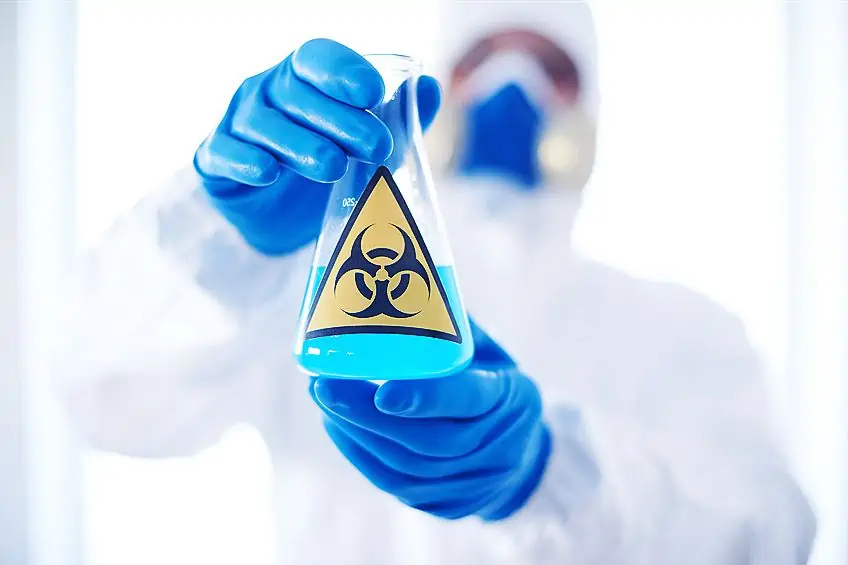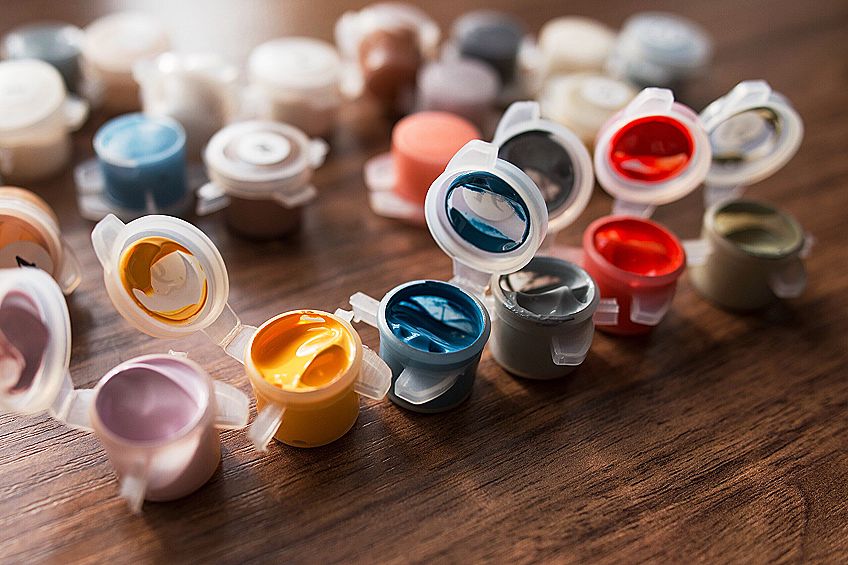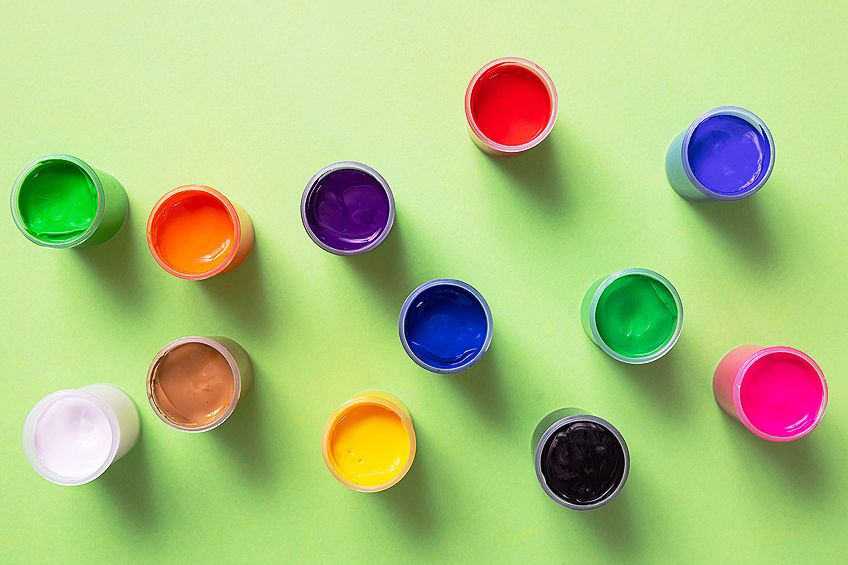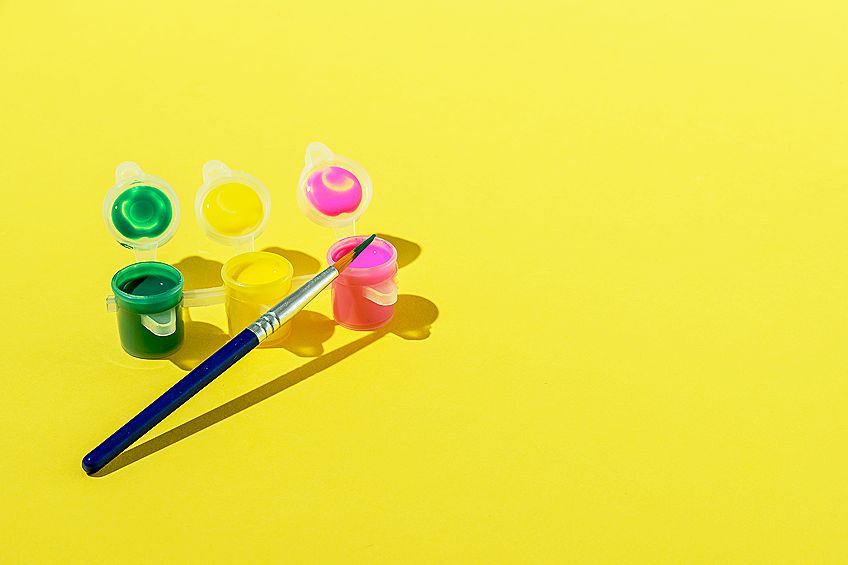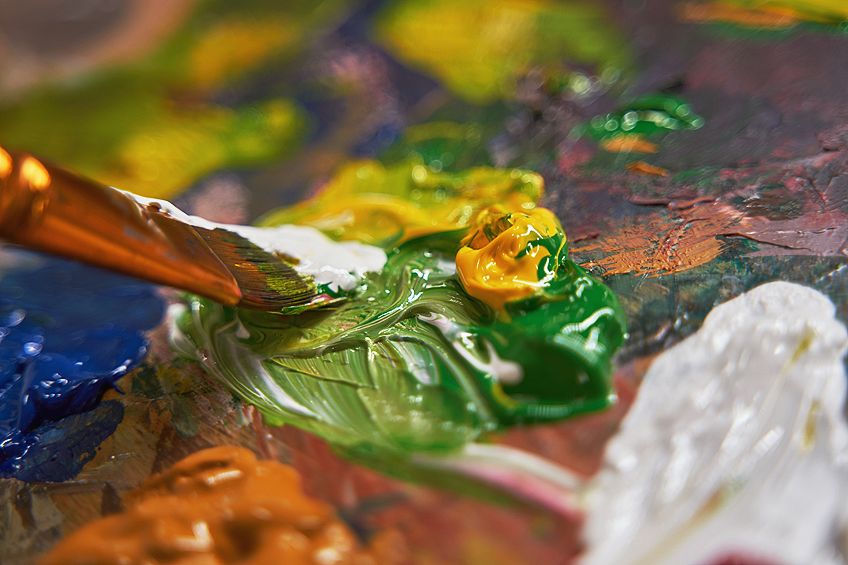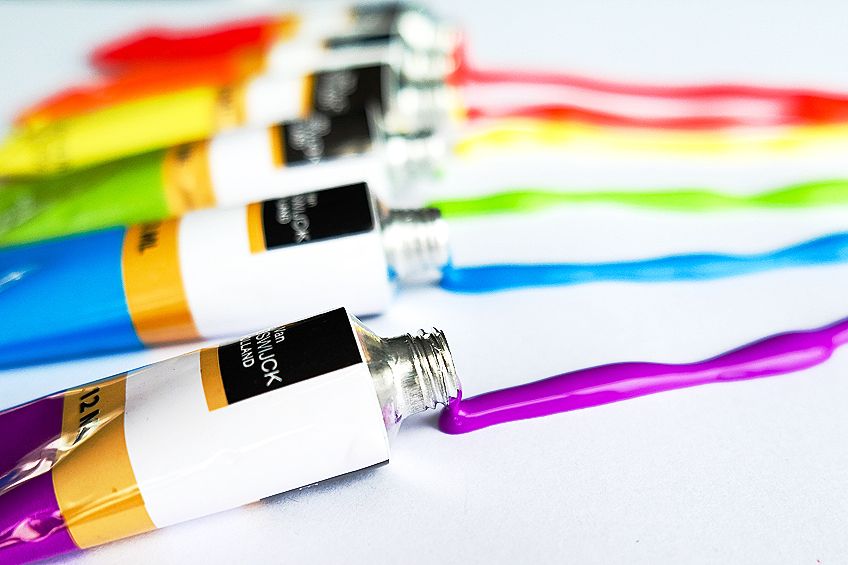Is Acrylic Paint Toxic? – Learning All About This Type of Paint
Painting is a wonderful means to express oneself creatively. Acrylic paint is one of the greatest types of paint that you can use. Using acrylic paint, you may create a wide range of colors, patterns, and effects. Acrylic paints are flexible, colorful, and stable, making them ideal for transforming your artworks into pieces of art that stand out from the crowd. However, it’s fair to be worried about the safety of these acrylic paints, particularly if this is your first time working with one of these products.
Contents
- 1 Is Acrylic Paint Toxic?
- 2 Types of Acrylic Paints
- 3 Advantages of Using Acrylic Paints
- 4 How to Select the Most Appropriate Acrylic Paints
- 5 Frequently Asked Questions
- 5.1 Are Acrylic Paints Flammable?
- 5.2 Is Acrylic Paint on a Child’s Face Considered Safe?
- 5.3 What Differentiates Acrylic Paint from Other Paints?
- 5.4 What Are the Benefits of Using Acrylic Paint?
- 5.5 Do Acrylic Paints Contain Toxic Materials?
- 5.6 Is There a Special Type of Acrylic Paint for Kids?
- 5.7 Are All Acrylic Paints the Same?
Is Acrylic Paint Toxic?
Acrylic paints, in general, are not harmful and are deemed safe to use as long as all necessary measures are taken when using them. This does not rule out the possibility that they contain any potentially harmful substances. When it comes to these paints, you will still discover some toxic substances in them.
Examples of acrylic paint toxins include cadmium, cobalt, chromium, manganese, and lead, all of which might cause negative side effects if not handled properly.
If you want to be certain about the components that are included in these acrylic paints, you should always read the label since paints that include harmful compounds are often labeled with the ingredients
Acrylic paints are different from oil-based paints in that they have a water base rather than an oil base. Consequently, washing such paints is simple, and you may effortlessly remove them by just rinsing them with water.
What Is Acrylic Paint Made Of?
Only three elements are used to make acrylic paint: pigment, an acrylic binder, and an acrylic vehicle. The acrylic pigment is responsible for the color of the paint and is made of acrylic resin. The pigment is made up of microscopic granules that have been broken down into very fine particles that are fixed in the paint without the need to be dissolved beforehand.
The pigments that are utilized might be synthetic or natural, organic or inorganic, depending on the application.
Acrylic Binder
This is referred to as acrylic polymer in certain circles. These are mostly used to guarantee that the pigment remains in place once the paint has dried. When the water from the paint evaporates, the second function is to aid in the formation of a protective coating.
Acrylic Vehicle
This is essentially water that is responsible for carrying the binder and the pigment within layers of paint. The paint will dry to a transparent polymer layer that includes small particles of colorful pigments after the water has evaporated from the paint.
Are Acrylic Paints Safe for Children?
Acrylic paints are a great way to keep your kids occupied and very happy. Is acrylic paint safe for kids? What are the risks of using acrylic paints with your children?
Some acrylic paints are safe for your children to use, but others may be harmful to them. This is because not all acrylic paints are the same, their composition differs, and the ingredients included in them are different. Furthermore, how these paints are applied might have an impact on their safety.
If you are using non-toxic acrylic paint, your children will be typically safe because this does not include any toxins. While using these paints, you will still need to make sure that your children are under your supervision, so keep that in mind.
Other brands, on the other hand, use harmful compounds in their acrylic paints, which is something you should avoid. Make a point of never purchasing such paints for your children since they are very dangerous to use.
Even when non-toxic acrylic paint is used, you will still need to follow various safety precautions and explain to your children how to use these paints appropriately to keep them safe.
Are Acrylic Paints Safe for Pets?
As a pet owner, you are certainly aware of how inquisitive your dogs may be and may be concerned about their safety while using these acrylic paints around your house. So, is acrylic paint toxic to pets? Well, it depends.
Water-based acrylic paint is non-toxic to pets and may be used safely around them. Although, it may cause mild discomfort on your dogs’ skin as well as a mucous membrane when it has been consumed in small amounts.
The use of significant quantities of this substance may result in major adverse effects such as nausea and vomiting, among other things. This is a situation in which you should contact your veterinarian as soon as possible.
Other indicators that you may notice include sadness, diarrhea, and even trouble breathing, all of which necessitate calling your veterinarian as soon as you can. This is why it is essential that you keep harmful paints, supplies, and any other items used out of reach of your pets.
Types of Acrylic Paints
Acrylic paints are available in a variety of types, with the primary distinction between them being the thickness and the components used in the paints. In addition, they vary in terms of consistency. The consistency of acrylic paints, on the other hand, does not influence the quality of the paint or the quantity of pigment contained inside them. A further difference is the binders that are utilized in these paints, since various paints might have different blinders.
Heavy-Bodied Acrylic Paints
As the name implies, they are acrylic paints that are very thick and heavy. Artists often use them in their work. These paints have a buttery feel to them, which makes them extremely similar to oil paint in appearance. Furthermore, the paints retain the brush markings and strokes that were applied to them.
They are excellent on a variety of materials, but they perform particularly well on a rough canvas.
Soft-Bodied Acrylic Paints
These are opposite to heavy-bodied acrylic paints. When compared to heavy-bodied acrylic paint, they have a smooth and thin consistency. They are excellent paints for blending a variety of mediums, including flow improvers, texture gels, and others.
Advantages of Using Acrylic Paints
Acrylic paints are extensively utilized for different projects by a variety of artists because of their vibrant coloration, which aids in the creation of more vivid artworks. The following points highlight some of the benefits of working with acrylic paints.
- Compared to other paints, acrylic paints have a fast-drying time of three to four hours upon application.
- Acrylic paints are not flammable. There are no flammable materials used in their manufacturing
- It is incredibly easy to mix the colors of these paints.
- They produce a very long-lasting coat.
- They are effective on a wide range of surfaces. They may readily adhere to a variety of surfaces, including metal, cloth, wood, and other materials.
How to Select the Most Appropriate Acrylic Paints
When purchasing acrylic paints, there are several factors to consider in order to guarantee that you get a paint that meets your requirements, while staying within your budget. Color, viscosity, drying time, permanence, and brand are some of the most important characteristics to check for when purchasing a new paint product.
Quality
There are two grades of acrylic paints: student quality and artist quality grade, which is sometimes referred to as professional grade. The primary difference between the two is that professional-grade paints have a greater degree of vibrancy and consistency than student-grade does.
Professional-grade is available in a variety of colors, has a large concentration of pigment, and also has a high rating for permanence.Student-grade paints, on the other hand, possess lower pigment levels and a limited color range option. It may also incorporate filters that reduce the vibrancy of the colors’ hues and intensities.
Student-grade is a fantastic option for those who are just starting.
Color
The color options are many and you may choose from a broad range of options. The colors may be blended to produce other colors, which is a good place to start for novices. You may also want to consider purchasing a color set, which will save you money over purchasing single tubes.
When it comes to artist-grade paints, you will notice that certain colors are more costly than others when compared to other paint colors. This is because the pigments in each color are different. You will also observe that colors formed from cadmium are significantly more costly when compared to colors obtained from other elements.
Permanence
The capacity of the acrylic paint’s pigment to withstand slow fading when exposed to light is referred to as its permanence. When compared to other types of paints, such as oil paints, the majority of acrylic paints have a strong permanence rating.
As a result, you should not expect that your work will fade quickly. Remember to check the permanence standards when you are purchasing your paint, since they might vary depending on the manufacturer.
Viscosity
This relates to how thick or thin your paint is. There are two different types of paint, namely heavy body acrylics and fluid acrylics. Heavy body acrylics are thicker and more consistent when compared to fluid acrylics. Fluid acrylics are thin and great if you are working with more detailed artwork.
There are also a variety of acrylic mediums available to choose from, depending on your artistic style as well as personal taste. You may also mix and match several kinds of acrylic paints at the same time.
Tube vs Jars
If you are looking for portable paints, you should go for the ones packaged in tubes, since they are small enough to transport easily. However, while jars are not as portable as cans, they are more cost-effective since they allow you to purchase a larger quantity of paint at once. The difference between these paints is their consistency.
The consistency of paint in tubes is similar to that of paste, but the consistency of paint in jars is much thicker.
Drying Time
While many painters favor acrylic paints over other mediums because of their short drying time, this may be a problem if the paint ends up drying too fast or dries on your brush before you have finished your painting. Purchasing a retarding medium, on the other hand, is an excellent means of ensuring that this does not occur.
Retarding medium is a special kind of acrylic paint that dries more slowly than regular acrylic paint.
Brand
Certain brands are much better than other brands when it comes to manufacturing acrylic paints. The brand you pick, on the other hand, will be more determined by your preferences. You will want to pick reputable and trustworthy brands to ensure that you get a high-quality product.
If you are using acrylic paints from various manufacturers, be sure that they are all of the same quality and are manufactured with the same binders to guarantee that there are no inconsistencies in your work as a result of mixing them.
Knowing the safety of the paints you’ll be working with may be very beneficial and perhaps lifesaving if you do it ahead of time. Knowing the acrylic paint ingredients can assist you in ensuring that your children and pets are protected from any potential harm that may occur as a result of using these acrylic paints. You will also want to follow the necessary precautions to guarantee the safety of your children and pets at all times.
Frequently Asked Questions
Are Acrylic Paints Flammable?
Acrylic paints are non-flammable because they do not include any combustible ingredients in their formulation.
Is Acrylic Paint on a Child’s Face Considered Safe?
The use of acrylic paint on your child’s face is not recommended. This is because it includes pigments that might irritate the skin when applied to the face. Instead, utilize certain types of paints that are specifically designed to be used on the face, such as face paints.
What Differentiates Acrylic Paint from Other Paints?
Acrylic paints have a wider spectrum of colors compared to watercolor and oil mediums. Acrylic paints have the potential to adhere to a wide variety of surfaces, and several mediums may be utilized to alter the bonding qualities of acrylics. Acrylic paints may be used on a variety of surfaces, like cardboard, canvases, and several other materials.
What Are the Benefits of Using Acrylic Paint?
There are a variety of reasons why you might consider using acrylic paints. In the first place, they dry more quickly than other paints, and provide a finish that is both tough and long-lasting.
Do Acrylic Paints Contain Toxic Materials?
Generally, acrylic paints are safe. Some of the acrylic paint ingredients that are considered harmful include manganese, cobalt, chromium, and lead.
Is There a Special Type of Acrylic Paint for Kids?
There are several kinds of acrylic paints made for kids. These include tempera paint, watercolor paints, finger paints, and activity paints.
Are All Acrylic Paints the Same?
Not all acrylic paints are the same. There are different kinds of acrylic paints. Some are heavy-bodied, while other paints are soft-bodied. The pigments, viscosity, and grade type are some factors that differentiate them.
Megan is a writer and researcher who holds a degree in Social Sciences, with a specialization in Psychology and Environmental Science, from the University of Cape Town. Her dedication to acquiring knowledge and making a positive impact has driven her current work in promoting conscious and sustainable growth in Southern Africa. Megan’s interests encompass exploring the physical and psychological impacts of color in our environment on our mood and well-being. She is also passionate about the role of art and creativity, which has been an integral part of society since the beginning of human history. Since 2022, Megan has been contributing blog posts on painting and color theory at artfilemagazine.
Learn more about Megan van Schoor and about us.
Cite this Article
Megan, van Schoor, “Is Acrylic Paint Toxic? – Learning All About This Type of Paint.” artfilemagazine – Your Online Art Source. February 1, 2022. URL: https://artfilemagazine.com/is-acrylic-paint-toxic/
van Schoor, M. (2022, 1 February). Is Acrylic Paint Toxic? – Learning All About This Type of Paint. artfilemagazine – Your Online Art Source. https://artfilemagazine.com/is-acrylic-paint-toxic/
van Schoor, Megan. “Is Acrylic Paint Toxic? – Learning All About This Type of Paint.” artfilemagazine – Your Online Art Source, February 1, 2022. https://artfilemagazine.com/is-acrylic-paint-toxic/.



